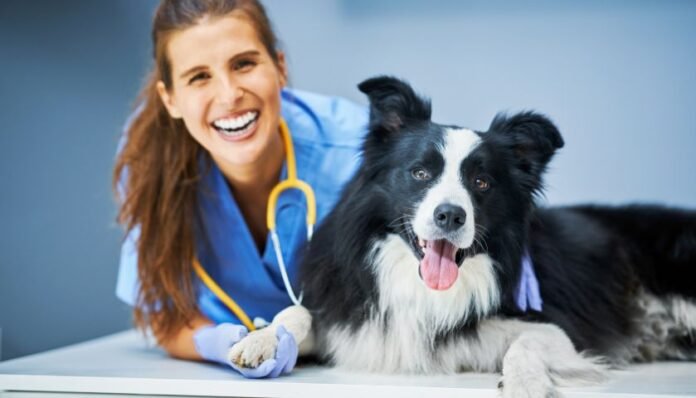As responsible pet owners, we strive to provide the best possible healthcare for our furry companions. One crucial aspect of veterinary medicine is accurate diagnosis, particularly when it comes to serious health issues like tumors or other abnormalities. TruCut biopsies have emerged as a vital tool in the diagnostic toolkit, providing veterinarians with essential tissue samples to help identify various conditions, including cancer. In this article, we will delve into what TruCut biopsies are, how they are performed, their benefits, and what pet owners should consider regarding this procedure.
What is a TruCut Biopsy?
A TruCut biopsy, often referred to as a core biopsy, is a medical procedure used to obtain a cylindrical core of tissue from a specific organ or mass within a pet’s body. This technique involves using a specialized needle, known as a TruCut needle, which is designed to collect a sample of tissue without the need for extensive surgical intervention. The biopsy can be performed on various tissues, making it a versatile option for diagnosis.
The Purpose of a TruCut Biopsy
The primary purpose of a TruCut biopsy is to gather tissue samples for pathological analysis. This analysis can help veterinarians diagnose a range of conditions, including:
- Cancer: Identifying whether a tumor is malignant or benign is crucial for determining the appropriate treatment plan.
- Infections: Certain infections may require tissue samples for accurate diagnosis and treatment.
- Inflammatory Diseases: Conditions such as autoimmune disorders can be assessed through tissue analysis.
The TruCut Biopsy Procedure
The TruCut biopsy procedure is relatively straightforward and typically follows these steps:
- Initial Evaluation: The veterinarian will first perform a physical examination of the pet and may recommend imaging studies (like X-rays or ultrasounds) to identify areas of concern.
- Preparation: Once a suspicious area is identified, the veterinarian prepares for the biopsy by cleaning the area and applying a local anesthetic to minimize discomfort. In some cases, sedation may be necessary.
- Biopsy Collection: The veterinarian inserts the TruCut needle into the targeted area. The needle is designed to capture a cylindrical core of tissue when withdrawn. The process usually takes only a few minutes.
- Post-Procedure Care: After the sample is collected, the site may be bandaged or stitched, depending on the size of the biopsy. Most pets can return home the same day.
- Laboratory Analysis: The collected tissue sample is sent to a pathology lab for examination. A veterinary pathologist will analyze the sample to determine the presence of disease and provide a detailed report.
Benefits of TruCut Biopsies
TruCut biopsies offer several advantages for both veterinarians and pet owners:
- Minimally Invasive: Unlike traditional surgical biopsies, TruCut biopsies are less invasive, leading to reduced trauma for the pet and quicker recovery times.
- High Diagnostic Accuracy: The cylindrical samples obtained allow for a more representative view of the tissue, improving the likelihood of an accurate diagnosis.
- Faster Results: The procedure is typically quicker, and results can often be obtained within a few days, enabling timely decision-making regarding treatment.
- Versatile Application: TruCut biopsies can be performed on various tissues and organs, making them useful for diagnosing a wide range of conditions.
What Pet Owners Should Know
As a pet owner, understanding the TruCut biopsy process can help you feel more prepared and informed. Here are some key points to consider:
- Discuss Concerns with Your Veterinarian: If your veterinarian recommends a TruCut biopsy, don’t hesitate to ask questions about the procedure, its risks, and what to expect during recovery.
- Follow Pre- and Post-Operative Instructions: Your veterinarian will provide specific guidelines for care before and after the biopsy. Adhering to these instructions is essential for a smooth recovery.
- Monitor Your Pet After the Procedure: After a TruCut biopsy, observe your pet for any signs of discomfort, swelling, or infection at the biopsy site. Contact your veterinarian if you notice any concerning symptoms.
- Understanding Results: Once the tissue sample is analyzed, your veterinarian will discuss the findings with you. This information will guide treatment options and help determine the best course of action for your pet’s health.
Potential Risks and Considerations
While TruCut biopsies are generally safe and well-tolerated, there are some potential risks and considerations to be aware of:
- Bleeding or Infection: As with any procedure that involves breaking the skin, there is a risk of bleeding or infection at the biopsy site. Your veterinarian will take precautions to minimize these risks.
- Anesthesia Risks: If sedation or anesthesia is used, there may be risks associated with these procedures. Your veterinarian will assess your pet’s overall health before proceeding.
- Incomplete Sample: In some cases, the sample may not provide enough tissue for a definitive diagnosis. If this occurs, your veterinarian may recommend further testing or another biopsy.
Conclusion
TruCut biopsies are a vital tool in veterinary medicine, offering pet owners a minimally invasive option for obtaining tissue samples crucial for diagnosing various health issues, particularly cancers. Understanding the process and benefits of TruCut biopsies empowers pet owners to make informed decisions about their pets’ healthcare. If your veterinarian recommends this procedure, rest assured that it is an essential step toward ensuring your pet receives the best possible care. By staying informed and engaged, you can help support your furry friend’s health and well-being throughout their diagnostic journey.



